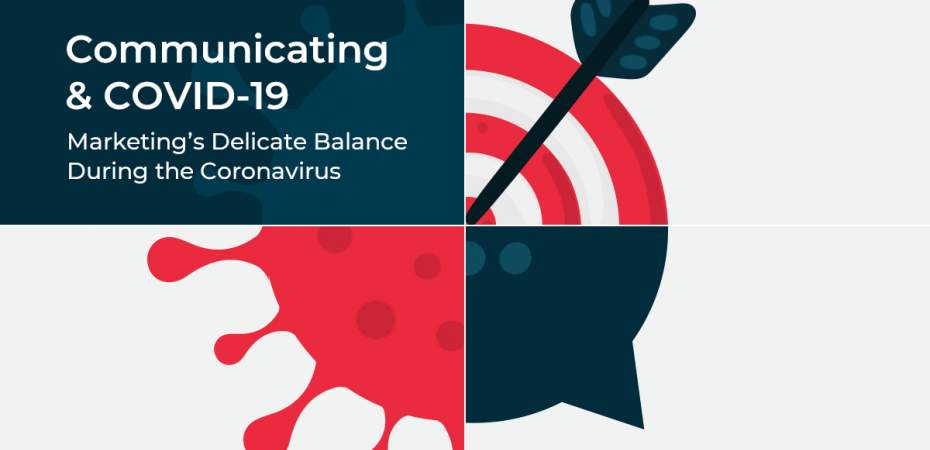July 28, 2020
| Article | by REQ Marketing | Content,
Social Media,
Technology
Reopening Checklist: Marketing Tactics to Reopen Effectively
With the COVID-19 pandemic, businesses around the world have been closed or limited to online shopping, curbside pickup, or takeout. While some areas of the country are opening back up, businesses across the country are still affected by the coronavirus pandemic and uncertainty around resurgence in various parts of the country. Here are some steps businesses can take as we continue to navigate these difficult times and look forward to safely connecting with customers in person.
The first step is to stay informed and keep in touch with customers. What you knew about your marketplace before COVID-19 may not serve you as well in an altered tomorrow. You may need to adapt to and adopt new products, services, and strategies quickly.
Communicate Each Step Clearly and on Every Marketing Channel
Consumers want to hear from trusted brands during the crisis. You want your crisis and recovery messages to reach customers no matter how they visit your business—whether it’s through online listings, your website, social media, or a newsletter.
Marketing Checklist to Prepare for the Business Recovery
Marketing during reopening needs to reassure buyers and aim to rebuild their confidence.
Do not assume operations will go right back to pre-pandemic conditions. Be prepared to accommodate shoppers who aren’t ready to ease up on their social distancing and wish to continue curbside, takeout, delivery, and online services.
1. Identify What Customers Need to Know
What do your customers need to know about your safety practices and reopening timeline? Here are a few ideas to get you started.
- What safety precautions do staff members take? Are they disinfecting surfaces more frequently? Do staff members use masks or gloves? Are you enforcing social distancing inside the store?
- Have your hours, service, or availability changed?
- Are you limiting the number of customers inside your store?
- What specific ways can they buy your products or services? For example, can they buy online, in-store, or using curbside pickup? Do you deliver?
- Would you prefer customers ordered online before coming in to pick up their purchase? Are appointments required? What is the booking process?
- Which touch-free payment solutions do you offer, if any?
Remember to share your answers and positions on these questions with any staff members who talk with customers.
2. Assess Your Current Marketing Plan
- Revisit all scheduled marketing tactics.
- Revise them to reflect the current situation.
- Identify specific and relevant solutions you can offer your customers.
- Bring relevant and timely items to the front of your marketing schedule.
3. Keep Your Website Updated With Announcements and New Information
The first place customers will check for updates about your business’s reopening is your website. Prioritize your website when posting announcements related to reopening.
- Make sure your hours, opening schedule, and contact information are instantly visible.
- Add a dedicated page to outline reopening procedures and answer frequently asked questions. Include social distancing options, your safety precautions, and whether or not face masks (or any other personal protective equipment) are required in or around your business.
- On your dedicated COVID-19 recovery page, share community-building stories or celebrate employees who contributed during the pandemic. Videos and photos keep customers engaged longer and leave a lasting impression.
- Install a prominent link from your home page to the COVID-19 recovery page.
4. Present a Consistent Online Presence
Ensure there is no inconsistency among your online messages on different platforms. Reading one message from your business on Yelp and another on Google erodes customer trust. Make a list of all your online listings and make sure they are all updated with your most up-to-date policies and procedures every time you make changes.
Your online listings may include:
- Professional organizations
- Google My Business profile
- Facebook, LinkedIn, Instagram, Pinterest, Tumblr, YouTube
- Yelp
- Online Yellow Pages
5. Communicate Your Message by Email and Social Media
Once your website is updated and your dedicated COVID-19 recovery web page is in place, announce your reopening through email and on social media.
Each time you make significant updates or approach an important date, make sure to communicate it to your audience through every marketing channel and include a link to your website.
As you inform customers about your safety procedures and update them on your opening timeline, remember to express your gratitude for their support.
6. Improve Your Online Review and Customer Feedback Strategy
Is there a system in place to answer online reviews across formats? As we emerge from COVID-19, customer feedback will be crucial for your team to stay in tune with customer sentiment, respond when necessary, and adapt accordingly.
Do you ask for reviews? Take charge of your digital reputation with an effective review management strategy.
Relationships Now Mean Traction Later
A crisis can bring out the best in people and organizations. It is a time when hope and support are noteworthy and appreciated. As part of your business crisis management, evaluate current policies. Consider reasonable changes like allowing cancellations or a limited suspension of late fees.
Bring out the humanity of your business. Innovate new ways to deliver your products, or aspects of them, online. Write proactive and valuable messages to distribute through email, social media, and the web. Your customers will learn they can trust your business to do the right thing when it’s important.
REQ can work with you to craft new messages and ensure they are deployed consistently across channels to build trust with your audience. Get in touch with us to talk about your online reputation management strategy and how we can help.

